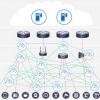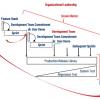Business Transformation Requires Transformational Leaders
Leadership and teaming skills are front and center in times of rapid change. Meet today’s constant disruption head on with expert guidance in leadership, business strategy, transformation, and innovation. Whether the disruption du jour is a digitally-driven upending of traditional business models, the pandemic-driven end to business as usual, or the change-driven challenge of staffing that meets your transformation plans — you’ll be prepared with cutting edge techniques and expert knowledge that enable strategic leadership.
Subscribe to Arthur D. Little's Culture & Leadership Newsletter
Insight
Intelligence at the Edge of IoT
This article discusses the Industrial Internet along with the IoT applications and domains that are most likely to benefit from edge computing.
This issue of Cutter Business Technology Journal offers perspectives from seven authors on fog/edge computing to bring some sunlight to the challenges, benefits, and possible uses of these emerging technologies.
The authors address the criteria for operating unmanned aerial vehicles, or “aerial drones,” in a fog architecture. The use of drones in supply chain delivery offers faster, more cost-effective delivery but also poses myriad concerns, ranging from collision to security risks, as well as regulatory concerns.
The OpenFog Reference Architecture for fog computing has emerged as a highly credible paradigm for architecting compute-intensive solutions for networks and applications that utilize IoT, 5G, and artificial intelligence. In this article, we’ll examine how fog architecture addresses cybersecurity for next-generation networks.
This article illustrates how fog computing can reduce waste, improve product quality and consistency, and create a digital twin of difficult-to-replicate processes through a hypothetical example of a craft brewery.
In a world where cyber threats are becoming ubiquitous, being able to apply a specific set of international standards combined with a dedicated and worldwide certification program, is one of the best ways of ensuring long-term cyber protection of critical infrastructure.
After a brief introduction describing cloud, fog, and edge computing, Cutter Senior Consultant Claude Baudoin provides an overview, along with his insights, of the panels and discussions at the recent Fog World Congress.
Agile Leadership in Scrum
In this Advisor, we align the Agile leadership framework to the key players in the Scrum process.

















